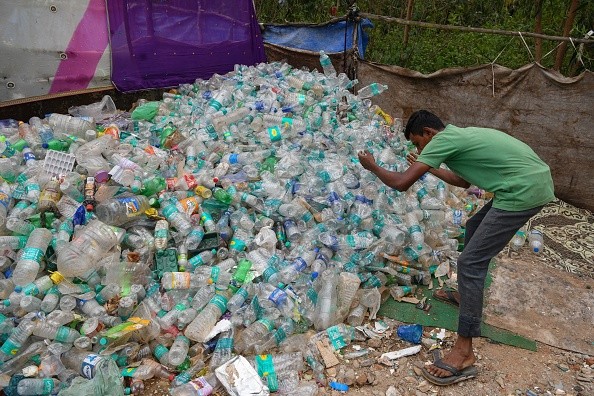A research published in Science Daily reveals that nanoplastics particles can be present in the food chain, from plants to insects and insects to fish. The findings show potential health risks for humans and animals.
Plastic pollution has been a significant concern for the environment. The use of plastics has been unstoppable, calling for countries to adopt eco-friendly policies to prevent increasing plastic pollution
The United Nations Environment Programme (UNEP) reiterated that the epidemic of plastic pollution increased from two million tonnes in 1950 to a whopping 348 million tonnes in 2017. By 2040, it is expected to double.
UNEP added that plastic pollution had become a global industry with $522.6 billion in value.
Research study

According to Science Daily, the research findings show that lettuce can take nanoplastics from the soil and transfer nanoplastics into the food chain. It can result in health risks for humans and herbivores animals. The study's lead author is Dr. Fazel Monikh, from University of Eastern Finland.
However, the researcher explained that studies related to the findings are urgently needed. He added that the uptake of nanoplastics from the soil by plants is a critical step in assessing the extent that nanoplastics can affect edible plants and food webs.
The report also noted that understanding plastic transfer to the food chain is limited, although there are studies explaining the toxicity of nanoplastics to humans, animals, and plants.
In detecting the presence of nanoplastics, researchers at the University of Eastern Finland conducted a metallic fingerprint-based technique. They used commonly found plastics in the environment, such as polyvinyl chloride (PVC) nanoplastics and polystyrene (PS). They investigated three trophic levels:
- The primary producer is lettuce.
- the primary consumer is black soldier fly larvae.
- The secondary consumer is insectivorous fish.
Researchers had lettuce exposed to nanoplastics for 14 days on contaminated soil. Then, they fed the lettuce to insects. After five days of lettuce feeding, insects were fed to the fish for five days.
In conclusion, the researchers discovered using scanning electron microscopy (SEM) the following:
- Nanoplastics were present in the roots of the plants and accumulated in the leaves.
- The digestive system of insects showed that polyvinyl chloride (PVC) nanoplastics and polystyrene (PS) were present in the gut and mount.
- PS nanoplastics in the insects were lower in number than PVC nanoplastics.
- After feeding on the contaminated insects, the fish showed nanoplastic particles in the gills, liver, and intestine tissue, with zero particles detected in the brain tissue.
Plastic pollution

UN reported that the impacts of excessive plastic production on climate change, nature damage, and pollution are catastrophic. Plastic pollution exposure to humans reveals potential health issues.
The report also added that plastic pollution affects over 800 marine and coastal species that are damaged and affected on the planet.
Ultimately, everyone must reduce plastic consumption. There are many environmental-friendly tips online for reducing plastic use.
Related Article: Plastic-Eating Enzyme Developed to Address the Planet's Growing Plastic Pollution Problem
For more similar stories, don't forget to follow Nature World News.
© 2026 NatureWorldNews.com All rights reserved. Do not reproduce without permission.





